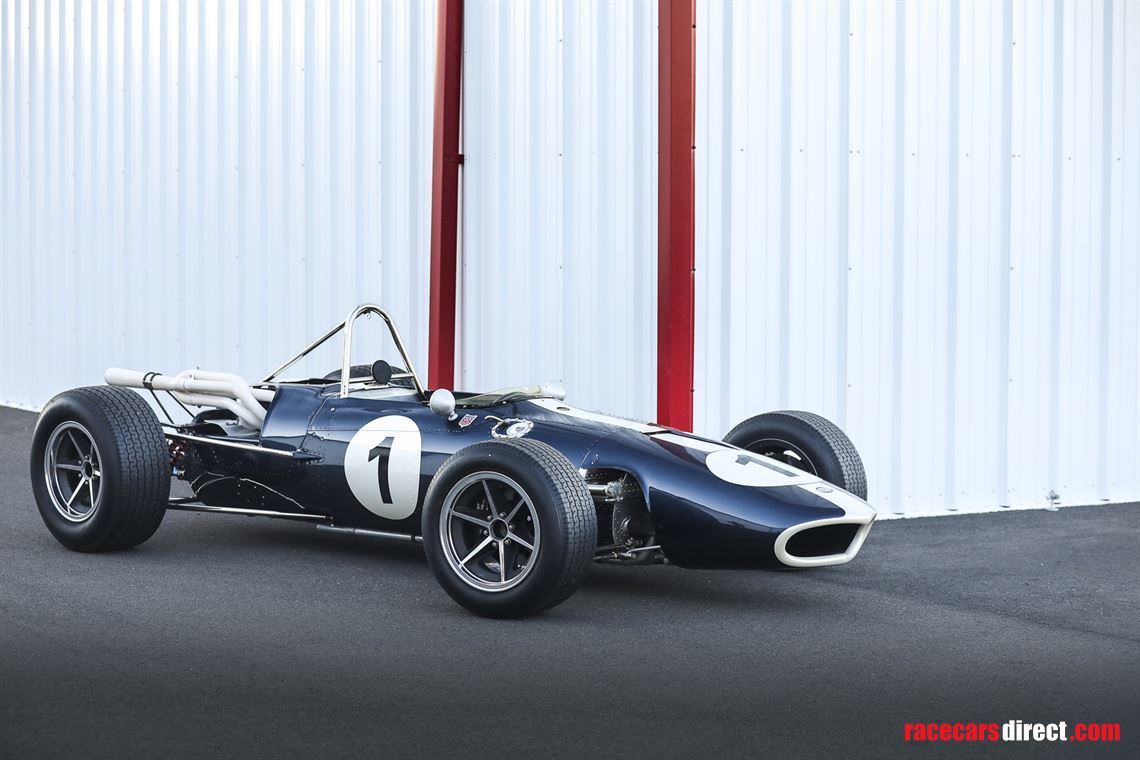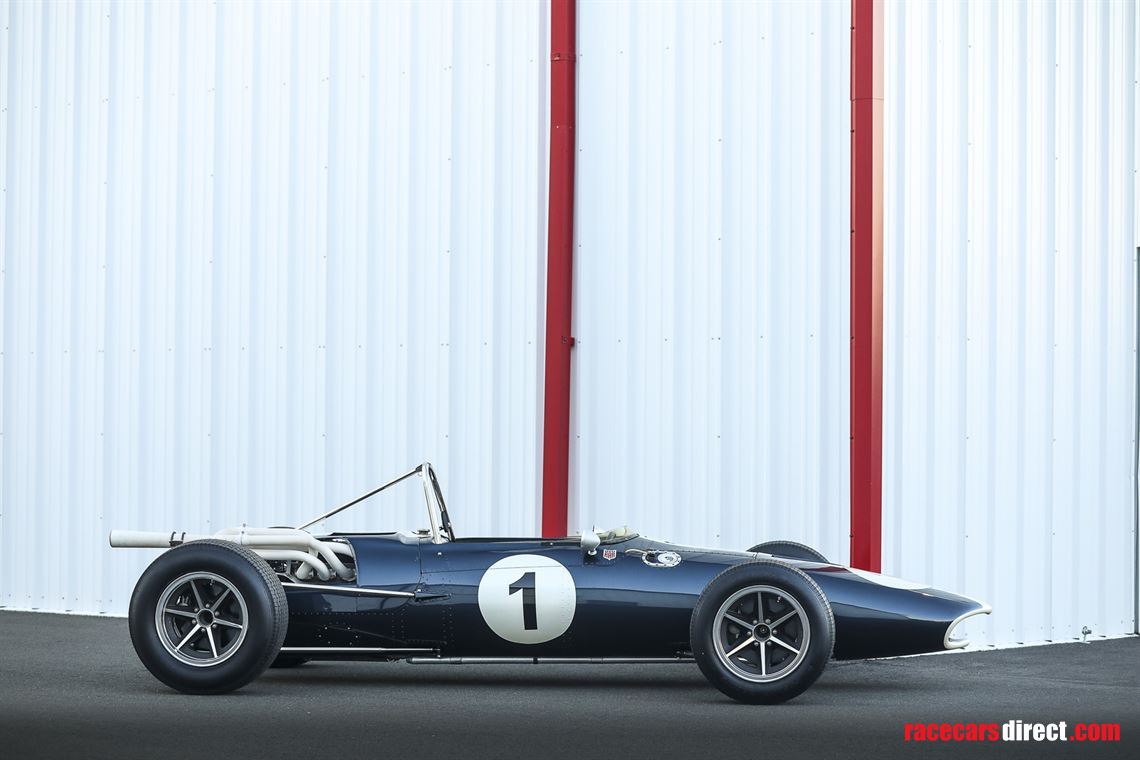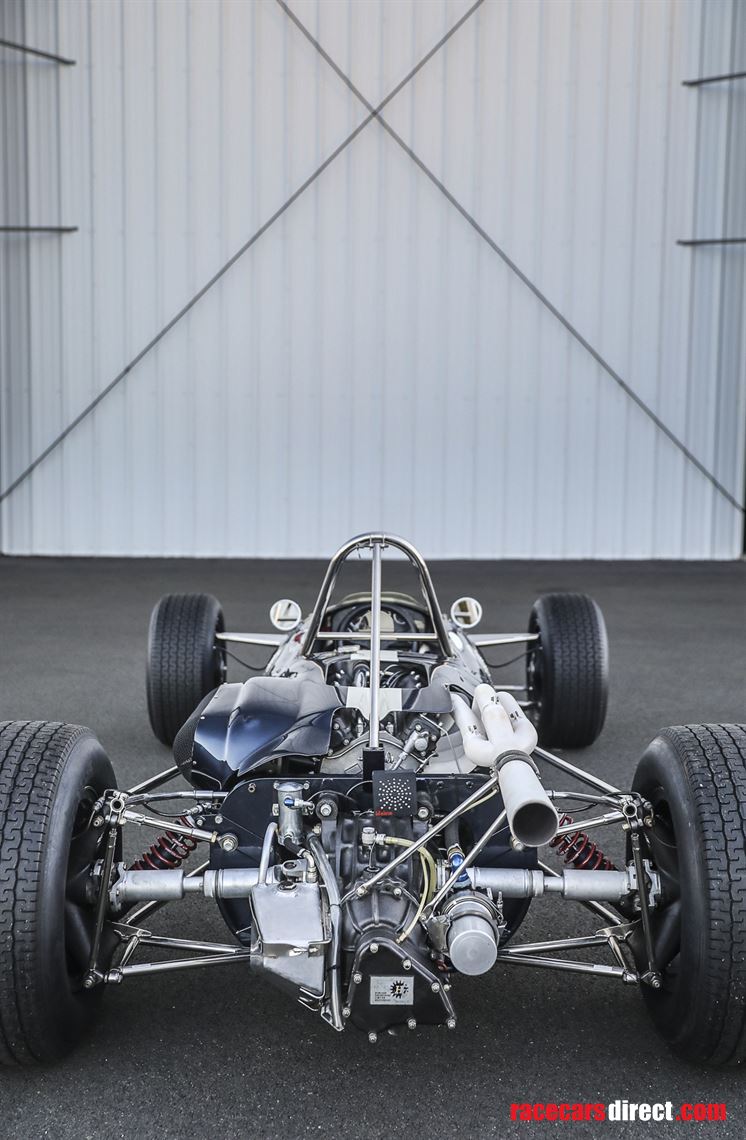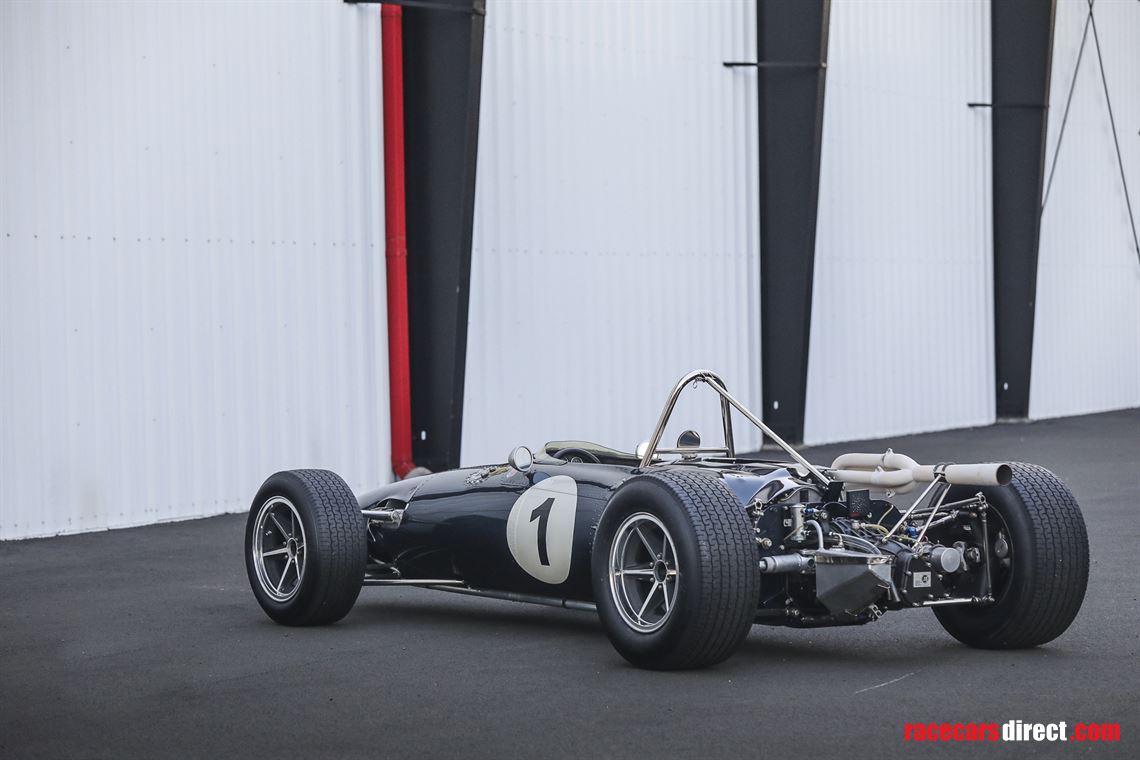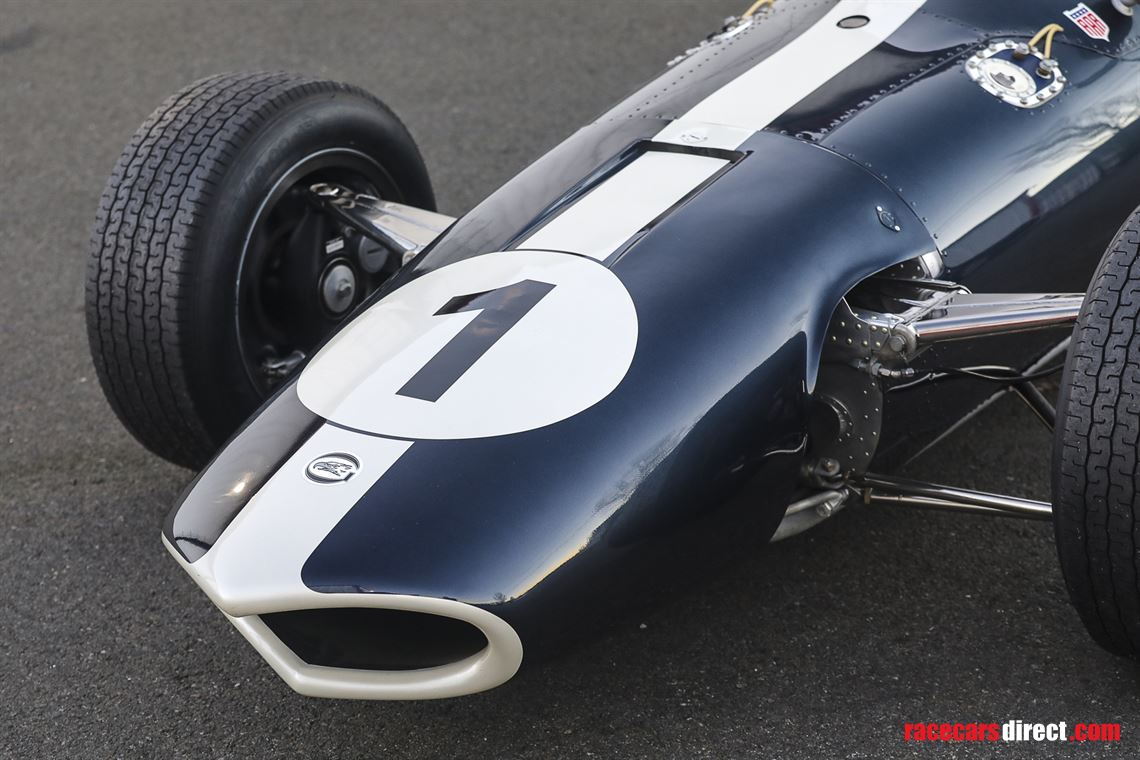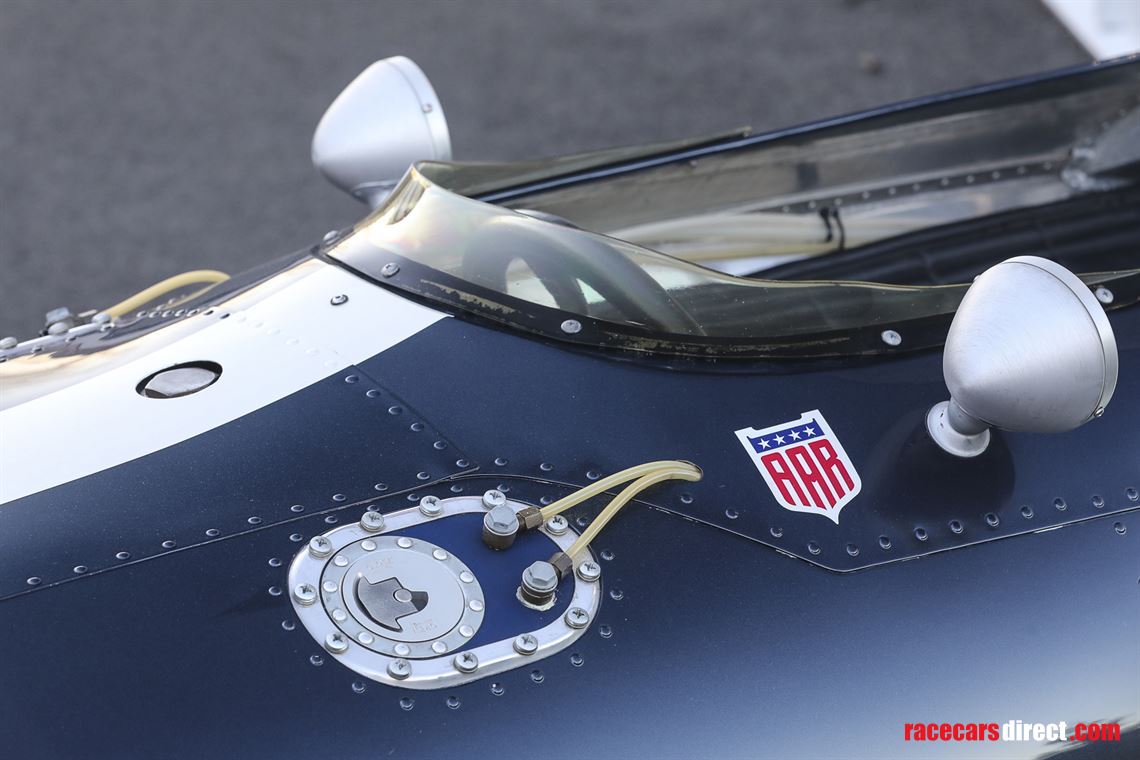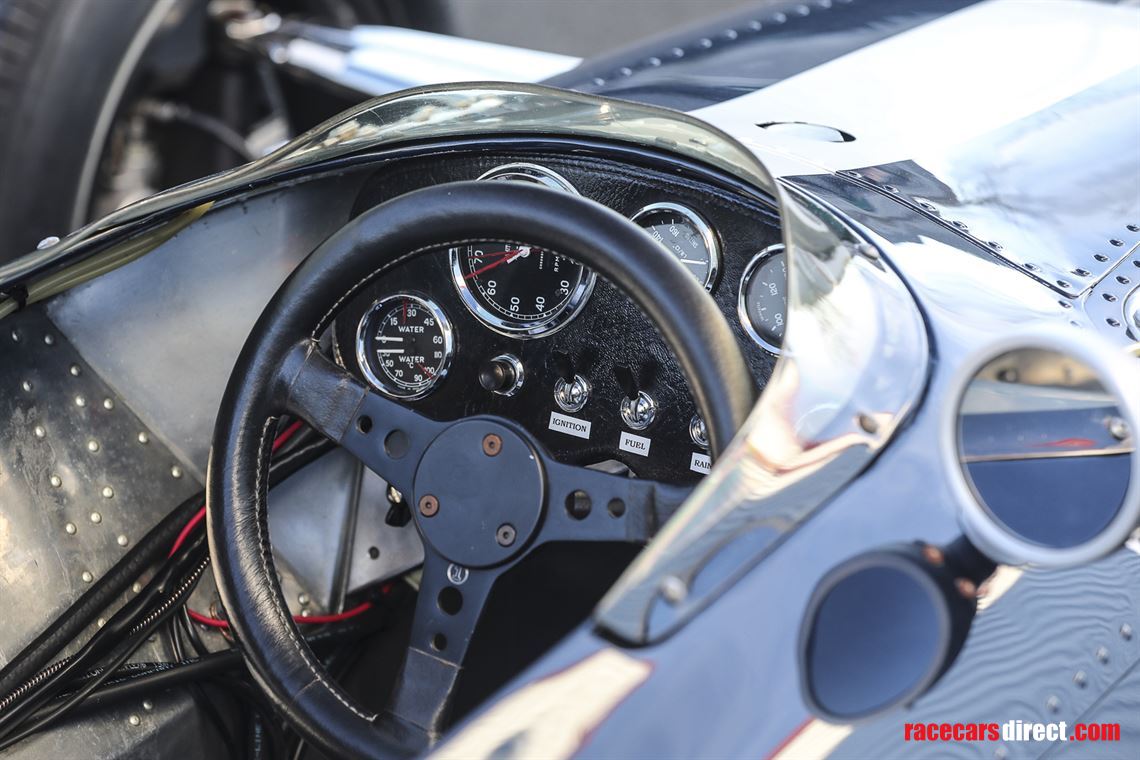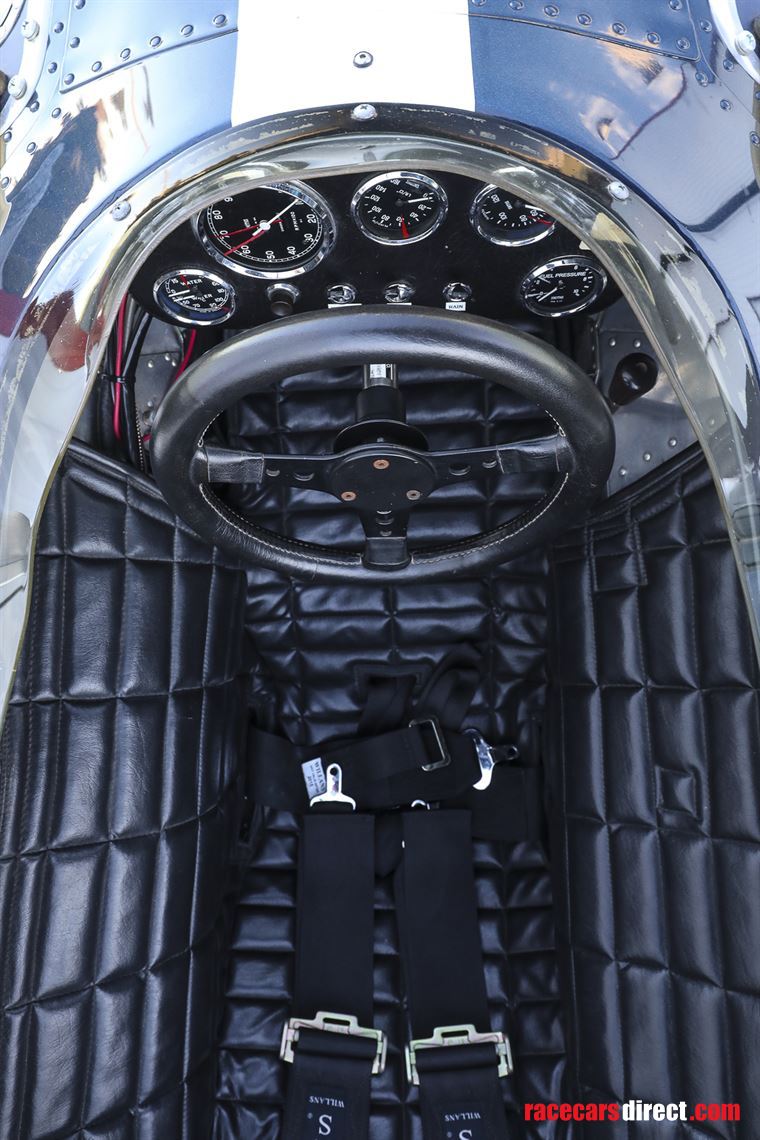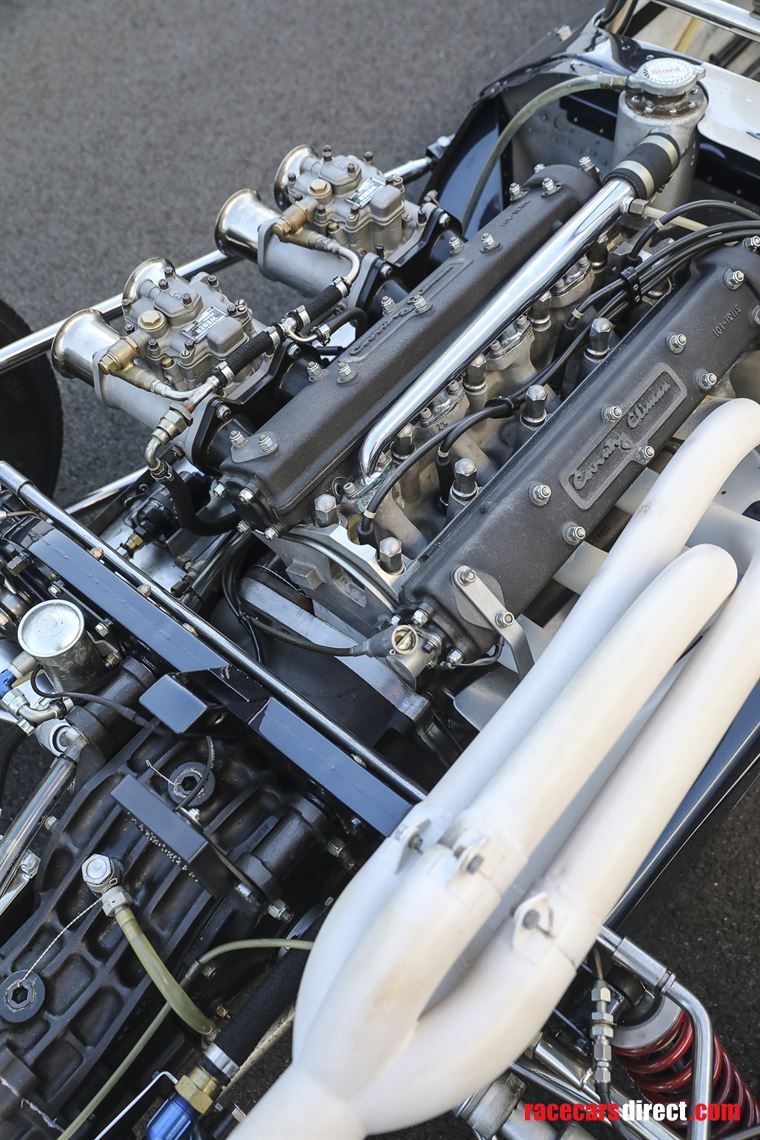Race Cars

$ 3,000,000
1966 AAR Gurney Eagle Mk 1 - SOLD
This is now SOLD. Search for similar items.
Description:
1966 AAR Gurney Eagle Mk 1
Available for Private Sale
Asking Price: $3,000,000
Highlights:
- The Very First Eagle Built by Dan Gurney’s All American Racers
- One of Just Four Formula 1 Eagles Built
- Driven by Dan Gurney, Bob Bondurant, and Phil Hill
- Fitted with Reproduction 2.7-Liter FPF, and Accompanied by Original
- Spent 38 Years as Part of the Donington Grand Prix Collection
- Among the Most Significant American Racing Cars Ever Built
Techincal Specs:
- 2,751 CC Coventry Climax FPF DOHC Inline 4-Cylinder Engine
- Two Weber 58 DCO3 Carburetors
- Estimated 250 BHP at 6,750 RPM
- 5-Speed Hewland DG300 Manual Transaxle
- 4-Wheel Girling Hydraulic Disc Brakes
- Front Independent Suspension with Rocker-Actuated Inboard Coil-Over Dampers
- Rear Independent Lower-Wishbone Suspension with Coil-Over Dampers
Provenance:
- All American Racers (built new)
- Al Pease, Ontario, Canada (acquired from the above in 1967)
- Donington Grand Prix Collection, UK (acquired from the above in 1971)
- Current Owner (acquired from the above in 2009)
Dan Gurney’s legacy as one of America’s most successful and well-loved racing drivers is perhaps surpassed only by the reputation he holds as a race car builder and innovator. Between 1965 and 2012, Gurney’s All American Racers built 158 cars in total, the very first being the example offered here – one of just four Formula 1 Eagles ever produced.
Gurney’s remarkable journey to racing prominence could never be replicated in today’s world. As a then-recent transplant from New York, Gurney fell headlong into Southern California’s hot rod scene of the 1950s. By the age of 19, he had built his own car that achieved 138 mph on the Bonneville Salt Flats in Utah.
In 1957, having shown his ability in numerous local sports car races, Gurney was asked to test Frank Arciero’s Ferrari 375 Plus-based “Arciero Special.” Gurney took well to the car, and in the inaugural Riverside Grand Prix he drove the Arciero entry to 2nd Place, beaten only by Carroll Shelby in a Maserati 450S. This result, and multiple subsequent wins with Arciero, caught the eye of North American Ferrari importer Luigi Chinetti.
Gurney raced a NART-entered Testa Rossa in the 24 Hours of Le Mans in 1958, and his first official Scuderia Ferrari works drive came at the 12 Hours of Sebring in 1959, where he shared a TR59 with Phil Hill, Chuck Daigh, and Olivier Gendebien on the way to victory in America’s most prestigious road race. Gurney soon became a fixture on the road courses of Europe, eventually racing for Ferrari in four Formula 1 Grands Prix and achieving podium finishes in three of them.
Enzo Ferrari’s management style wore on Gurney, and for the 1960 season he moved on to a more lucrative deal with British Racing Motors, though consistent mechanical issues would waste his considerable efforts. Gurney spent the 1961 and 1962 Formula 1 seasons with Porsche, and he rewarded the company with their first Formula 1 win at the 1962 French Grand Prix. The next two seasons found Gurney at the wheel of a Brabham, and he repeated his accomplishment by winning that team’s first race in 1964, again in France. While focusing his efforts on Formula 1 with Brabham, this stretch also saw Gurney driving extensively in sports cars, both for Shelby American Inc., in Cobras and GT40s, but also in a Lotus 19 that he bought and ran himself.
In 1965, spurred by Goodyear’s desire to fund a team, Carroll Shelby and Dan Gurney combined their considerable resources and founded All American Racers (AAR) in Costa Mesa, California. AAR built single-seaters for Indy car racing and Formula 1, while also running sports car efforts for Gurney in the US.
Among the first calls that Gurney made was to Len Terry, the English designer responsible for the Lotus 38 that won the Indianapolis 500 in 1965 with Jim Clark.
Terry and Gurney worked together to further expound on the details that made the 38 so successful at Indy. They also adapted those principles to create a Formula 1 car that would take advantage of new regulations for the 1966 season, expanding engine displacement allowances from 1.5 to 3.0 liters. This car, Eagle Mk 1, chassis 101, is the first chassis built by the company.
AAR’s planned assault on Formula 1 had a clear goal, which was to win a race – and subsequently a championship – with Gurney driving a car of his own manufacture. To that end, engine builder Harry Weslake was contracted to develop a three-liter V-12 engine to compete with Ferrari, Lotus, et al., in the ensuing years. Since the V-12 would not be available for some time, alternative engine options were considered for chassis 101, and the team landed on a 2.7-liter variant of the venerable Coventry Climax FPF, an engine that had seen considerable success in Formula 1 and sports car racing in years past.
1966 was significant in Formula 1, for John Frankenheimer’s film Grand Prix was being shot throughout the year. Chassis 101 was captured multiple times in the film, including its debut race at Spa. As chronicled in some of the film’s most dramatic scenes, that year’s Belgian Grand Prix featured rain, and chassis 101 came home 7th as the final finisher.
The French GP was run at Reims, and after qualifying just 15th in chassis 101, Gurney crossed the line in 5th Place, with many cars experiencing mechanical failure as the teams grappled with cars built to the new regulations. These gremlins would strike Gurney’s Eagle in the next two races, with chassis 101 retiring from both the British and Dutch Grands Prix with minor mechanical failures. The German GP was next, and on the fearsome Nürburgring Nordschleife, Gurney showed the inherent qualities of the new Eagle by qualifying in 8th Place, just six seconds off the pace of Jim Clark’s Lotus. In a wet race, the Eagle finished 7th, with Gurney struggling with electrical issues.
September’s Italian Grand Prix brought the debut of the Weslake V-12 engine, powering the new Eagle chassis, 102, which acted as Gurney’s main car for the weekend. Chassis 101 served as a practice car at Monza, and was also offered to Gurney’s friend Phil Hill, who failed to qualify for the GP due to the limited power available from the Climax engine on Monza’s long straights.
The United States GP at Watkins Glen was next on the schedule and, as an important race for AAR, both Eagles were entered, with Bob Bondurant piloting chassis 101. Unfortunately, Bondurant was disqualified on lap five of the race.
The V12-powered Eagle, chassis 102, had been proving unreliable, and so in Mexico, Gurney drove chassis 101 and placed Bondurant in 102. Chassis 101 finished 5th, matching Gurney’s best result of the year in France. Mexico was the last championship event for chassis 101 with AAR, but it was entered in the non-championship South African GP at Kyalami in January 1967, where it retired with Gurney at the wheel.
With AAR preparing two additional Eagle Mk 1 chassis for the 1967 season, chassis 101 was sold to Canadian racer Al Pease, who entered it in 10 races, including the 1967, 1968, and 1969 editions of the Canadian Grand Prix.
As carefully chronicled in this car’s fascinating history file, chassis 101 was sought out by one of Formula 1’s biggest characters and pioneering collectors, Tom Wheatcroft. Mr. Wheatcroft had recently purchased the Donington circuit in the UK and was in the process of restoring the track. As shown through letters on file, Mr. Wheatcroft tracked down the Eagle Mk 1, chassis 101, through a contact in Toronto, and purchased the car from Pease in 1971 for £2,900. In a letter to Mr. Wheatcroft dated July 21, 1971, Pease wrote: “The car is in perfect condition and is original in every way. Recently, it had been repainted to the original colours, and all the suspension nickel plated. The only parts not original, at the moment, are the tires.”
The Eagle became a centerpiece of Mr. Wheatcroft’s massive and significant Donington Grand Prix Collection for 38 years, before being purchased by the consignor in 2009 via Hall & Hall. Accompanying the car was not only the documentation from Mr. Wheatcroft’s purchase from Pease, but also original AAR documents including setup sheets and tracking logs from the car’s racing career. Significantly, inspection of these sheets showed that this Eagle was still fitted with the same engine (no. 1254) and Hewland transaxle (no. DG300-2) that had been installed for the car’s initial shakedown at Goodwood on June 8, 1966, and also used in the majority of its races with AAR.
With the desire to race the car, the consignor undertook a careful and sympathetic restoration managed by the experts at J&L Fabrication in Puyallup, Washington. To preserve the original engine, a reproduction 2.7-liter Climax FPF was sourced from Crosthwaite & Gardiner in the UK (engine 1254 has been preserved and accompanies the car at auction). The exquisitely finished car still shows incredible originality, as noted by Gurney himself while viewing and signing the Eagle after restoration.
The consignor’s dream of competing on the streets of Monaco was fulfilled at the wheel of chassis 101 during the 2014 Monaco Classic Grand Prix, where the car performed well and was much admired by throngs of enthusiasts. The Eagle has since been carefully preserved in the consignor’s collection of significant racing and road cars, and stands ready to offer entry into almost all of the world’s most significant automotive events.
This is a car that ticks all of the boxes for the collector who desires only the finest historic racing cars. Not only is this a model of incredible significance and rarity constructed by a legendary manufacturer, it also retains originality that can only come from the careful stewardship of a collection like that assembled by Tom Wheatcroft.
With just four owners from new, retaining its accompanying original engine, gearbox, and monocoque, and standing as the elemental foundation of the AAR Eagle series of racing cars, this extraordinary and well-documented single-seater is among the most important American-built cars of its generation.
*Please note that this vehicle is sold on a Bill of Sale.
Race Highlights:
- Belgian Grand Prix, 1966, Gurney, No. 27 (DNF)
- French Grand Prix, 1966, Gurney, No. 26 (5th)
- British Grand Prix, 1966, Gurney, No. 16 (DNF)
- Dutch Grand Prix, 1966, Gurney, No. 10 (DNF)
- German Grand Prix, 1966, Gurney, No. 12 (7th)
- Italian Grand Prix, 1966, Phil Hill, No. 34 (DNQ)
- United States Grand Prix, Watkins Glen, 1966, Bondurant, No. 16 (DQ)
- Mexican Grand Prix, 1966, Gurney, No. 15 (5th)
- South African Grand Prix, 1967, Gurney, No. 9 (DNF)
- Canadian Grand Prix, 1967, Pease, No. 11 (DNF)
- St. Jovite Grand Prix, Canada, 1967, Pease, No. 69 (DNF)
- Canadian Formula Championship, 1968, Craig Hill, No. 69 (DNF)
- Thompson Grand Prix, Connecticut, 1968, Pease, No. 69 (DNS)
- Mosport Continental, Canada, 1968, Pease, No. 69 (30th)
- Lime Rock Grand Prix, Connecticut, 1968, Pease (DNS)
- Canadian Grand Prix, 1968, Pease, No. 25 (DNS)
- Canadian Grand Prix, 1969, Pease, No. 69 (DNF)

